Meaning of spiritual yoga symbols & images

In the culture of Yoga, yogis use a variety of symbols including: yoga symbols, Sanskrit symbols, spiritual symbols, and meditation symbols.
The universe speaks many languages, and they often come to us in the form of symbols.
These spiritual yoga symbols and energies are all around us – you are most likely already in tune with them!
Symbols can be used in the yogic traditions representing energies, beings, and manifestations.
What are the most important spiritual Yoga symbols for Yogis – What do they mean?
Each yoga symbol pulls influences from the traditions that they come from: Vedic traditions, Hinduism, Buddhism, etc. As one particular verse in the Upanishads (Vedic Sanskrit texts) states: Ekam sat vipraha bahudha vadanti – the Truth is One, and the wise describe it differently.
As we aim to harness our minds and bodies in yoga – spiritual symbols, Sanskrit symbols, meditation symbols, beings, and guides can help deepen it. Understanding their purpose is key to be in touch with the traditions mindfully.
Some of these yoga symbols are used in their physical form (to help the practitioner use them easily) or concepts in the mind that help guide our practice. What are some of the most important and widely seen symbols that yogis use, and what do they mean? Here are some examples below.
Om / Aum yoga symbol 🕉️
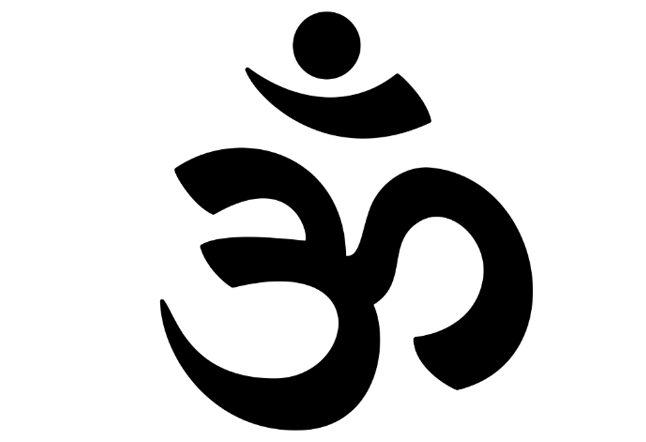
One of the most common and sacred spiritual symbols in the yogi tradition is the word Om. The Sanskrit symbol Om, is the consciousness of the universe solidified into sound. Chanting Om 🕉️ during meditation and yoga practice connects us to the cosmos’ vibration. This Sanskrit symbol is the seed of all creation and invites a deep feeling of clarity and bliss.
The vibrations of the Sanskrit symbol Om positively impacts our mental, emotional, and physical states. The mind becomes aligned with our breathing, which helps us rise to higher states of consciousness. It refers to Atman (the soul or self within) and Brahman (ultimate reality, cosmic knowledge, the entirety of the universe).
Each feature of the Om’s visual form signifies a state of reality. The big lower curve in this spiritual symbol represents our waking state. The upper curve represents the unconscious state (or the deep sleep state). The curve in the middle represents the dream state. The dot symbolizes enlightenment. The crescent represents Maya or illusion in the Om Sanskrit symbol.
Read more on OM / Aum 🕉️ here.
Mandala Spiritual Yoga Symbol
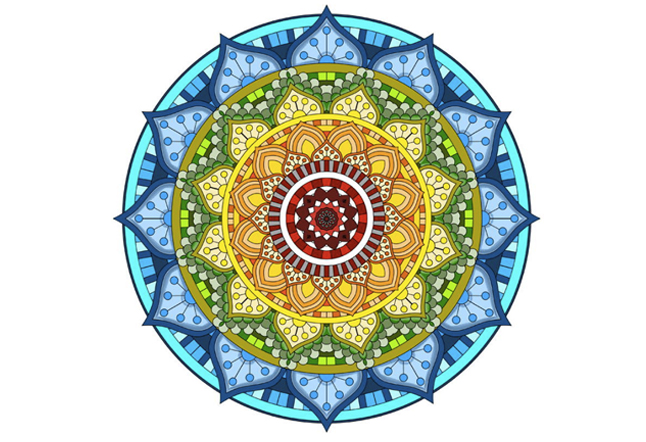
.
A yoga symbol representing the universe, Mandala is commonly translated as “circle” in Sanskrit. This spiritual symbol is characterized by circular designs that include other geometric shapes and lines. The delicate way that the patterns and colors interlace within the Mandala represents the balance, harmony, and unity that one can find when looking closely at nature, life, and the universe.
In the yogic tradition, Mandalas can help deepen meditation and yoga practice. Focusing on the mandalas or placing them near spaces where you do your practice invites the presence of the divine and the universe more clearly. These meditation symbols can serve as a reminder that everything starts from one point and gradually circles out in beautiful and intricate designs.
Making Mandalas is also a way to channel spiritual expression and energy in the present moment and as a way to connect us to the source of our existence – our beginning.
Lotus flower Yoga Symbol

In the muck of swamps, the lotus flower thrives and reflects the capacity of beautiful things to grow and prosper even in the darkest of places. Being a spiritual symbol, it reflects the opening of our hearts and the ever-present opportunity for enlightenment. A lotus bud is inside all of us, just waiting for the right moment to unfold into a bloom!
In yoga, the lotus position or padmasana is a seated, cross-legged position. It helps to open the hips and release tension or emotions that are stored there. It is a meditation posture that can help to deepen our practice. As it is a somewhat difficult posture to master right away, one should do the position with gentle patience and any modifications needed. It is common to do a half lotus pose either with or without props or a seated meditation posture on a chair.
Lotus flowers are also important symbols in the visual representation of chakras. For example, the first chakra (the root chakra) is symbolized with four petals. The seventh chakra (the crown chakra) is symbolized with a thousand petals.
Hamsa / Evil eye symbol
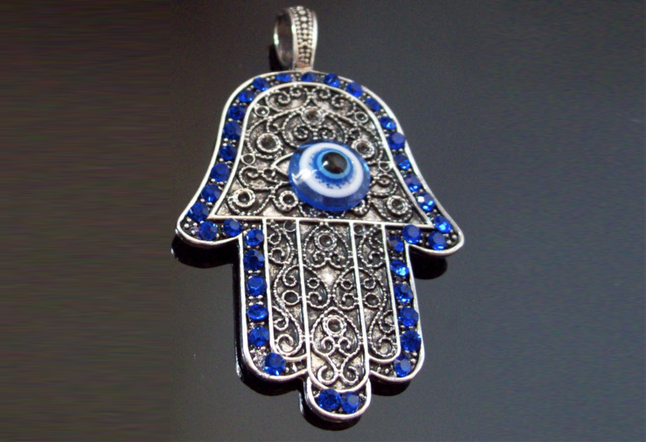
The Hamsa is a symbol and talisman in the form of an open hand, sometimes showing the thumb and the pinky finger with equal length. It originates from the Middle East and Northern Africa, particularly in Jewish and Islamic faiths. “Hamsa” derives from the word “khamsah” in Arabic and “hamesh” in Hebrew – both meaning “five.”
The Hamsa is used for protection, particularly against the evil eye, a manifestation of others’ jealousy or pure malice. The evil eye symbolizes the harm from others that intend to cause bad luck, danger, or unhappiness to another person. It arises from envy. Talismans in the shape of an eye (usually made of glass with blue and white colors) are also worn to face the evil eye.
While the Hamsa is not traditionally part of yoga practices that come from India, the Hamsa can be used as extra protection against the malice of the evil eye.
Buddha
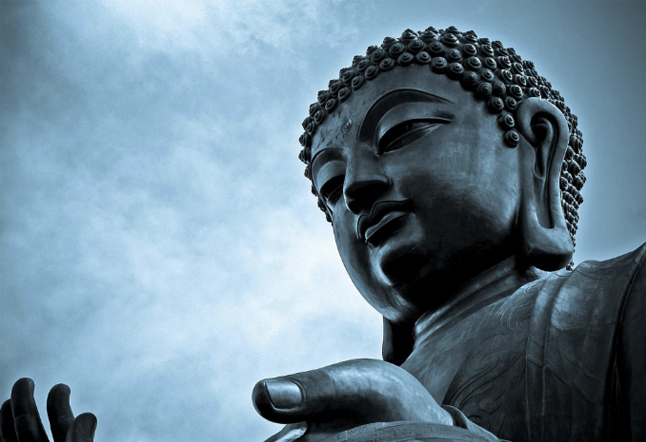
A Buddha is an enlightened being – a Sanskrit word for “a person who is awake” or “the awakened one.” The founder of Buddhism, Siddharta Gautama, is commonly referred to as the Buddha. The Buddha was a prince who renounced his sheltered and lavish life to seek peace and an understanding of life and death after realizing the gravity of human suffering. The Buddha sought to teach other people how to seek and find enlightenment for themselves. He is depicted in several different poses, including those that represent meditation, security, bliss, healing, and touching the Earth.
Buddhism and yoga aim to be in touch with our highest state of being and conscious awareness of the world’s underlying reality. Figurines and images of the Buddha respectfully used in a yoga practice can be a way to honor this great awakened being and remind us to be mindful and compassionate in our practice – both on and off the mat.
Chakras Symbol
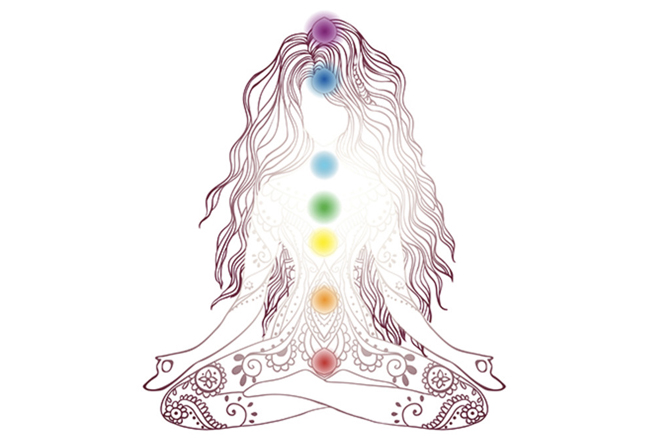
In Sanskrit, “chakra” translates to wheel or disk. In yoga, these wheels are more than just wheels – they are centers of life energy, or prana, located within the body. There are seven of them, with the first (the root chakra) located in the base of the spine. The rest are spread upward throughout the length of the spine. Each one has a unique role and significance to our spiritual, mental, emotional, and physical well-being.
It’s important that our seven key chakras remain open, aligned, and fluid. Energy (also called prana or chi) does not circulate if there is a blockage, and illness can find its way into our bodies.
The chakras in order are as follows:
- Root Chakra (Muladhara) – located at the end of the spine
- Sacral Chakra (Swadhistana) – located in the sacrum
- Solar Plexus Chakra (Manipura) – located above the navel
- Heart Chakra (Anahata) – located in the heart center or chest
- Throat Chakra (Vishuddha) – located in the throat
- Third Eye Chakra (Ajna) – located between the eyebrows
- Crown Chakra (Sahas Rara) – located at the top of the head
Read more on the Chakras here.
The number 108 Yoga Symbol
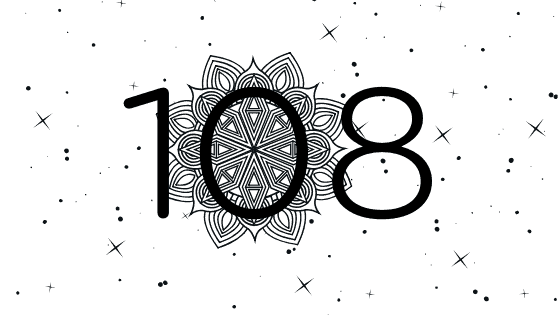
The number 108 holds important meaning for spiritual fulfillment. In Vedic cosmology, it is the foundation of life, the basis of creation, and reflects the world and our existence. There are 108 Upanishads (holy scriptures of the ancient sages’ wisdom) in Hinduism. A yoga mala consists of sun salutations in 108 repetitions. In Ayurveda, yoga’s sister science, there are 108 points of energy and life force in the body. On New Year’s Eve, bells in Japanese Buddhist temples ring 108 times to cleanse the 108 worldly passions.
It is also significant in mathematics and the science of the universe. The Sun’s diameter is 108 times the Earth’s diameter. The Sun and Moon’s average distance to Earth is 108 times their respective diameters. 108 is also a Harshad number – it is divisible by the sum of its digits. 1+0+8 is equal to 9, and 108 is divisible by 9. 108 is a number that can help us become closer to the universe, which also brings us closer to ourselves.
Mala

Malas are strings of beads used in meditation and repetition of mantras (recitation of mantras is also called Japa in Sanskrit). Typical long malas necklaces have 108 beads, and there are shorter malas with 26, 50, and 54 beads.
Malas are used to recite and chant mantras or the names of a deity. The beads help keep count of how many repetitions have been completed. Malas help provide focus and concentration during spiritual practice and are naturally a meditation symbol.
Malas typically have a guru bead, which is bigger than the other beads. The guru bead represents your connection to your spiritual teachers.
Most traditions teach that one does not pass the guru bead once a round of repetitions on the mala is complete. One flips the mala and begins in the direction that you had just come. Which hand one uses depends on the tradition – Hindu practitioners generally use their right hand while Tibetan Buddhists use their left.
Namaste
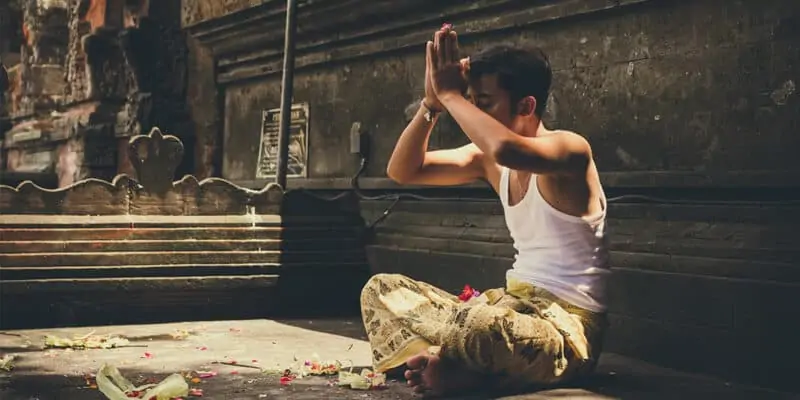
The word namaste comes from the Sanskrit words “namah,” meaning “to bow, to bend,” and “te,” meaning “to you.” Put together, the word namaste means “I bow to you.” Namaste is a way of saying hello and goodbye in Hindi and various other languages originating from Sanskrit. Namaste also appears in the Vedic tradition as a greeting to a divinity and a meditation symbol.
Namaste could either be a casual or formal greeting, a convention of culture, or an act of worship. The hands’ palms are placed together with the fingertips touching, and it is often done with a slight bow of the head. Within greetings and farewells, Namaste has the power to recognize that the divine in us is also the same as the divine in others. When done correctly, greeting another person with this meditation symbol acknowledges and honors the divine within every person we meet.
Also Read>>> Meaning of Namaste
Ganesh
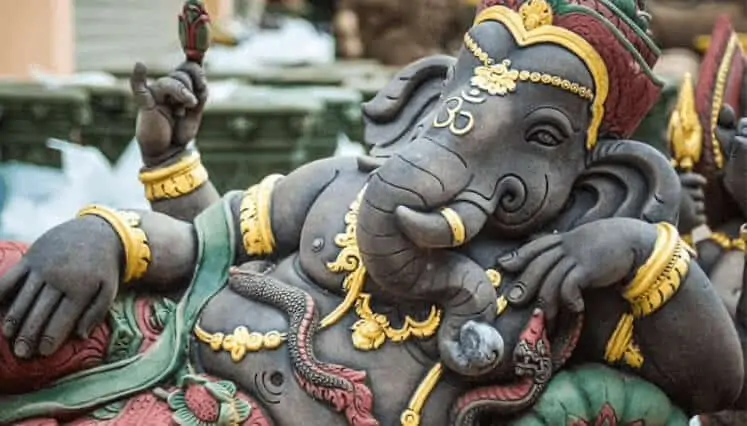
Lord Ganesh or Ganesha is a Hindu deity with a human body and the head of an elephant. Among his 108 names, he is known as The God of Wisdom and The Remover of all obstacles. He is worshipped before new beginnings and removes obstacles for better prosperity.
His elephant head symbolizes wisdom, and his large ears symbolize the virtue of listening well to others. He has a big belly to represent the whole universe, serving as a reminder to receive (or digest) all good and bad experiences with patience. His right tusk, which symbolizes wisdom, is accompanied by his broken left tusk, which symbolizes emotion. It conveys the need to master emotions with wisdom.
Lord Ganesh is also associated with the root chakra, which represents survival. This meditation symbol provides support for our endeavors by removing obstacles for our higher fulfillment.
Mudras
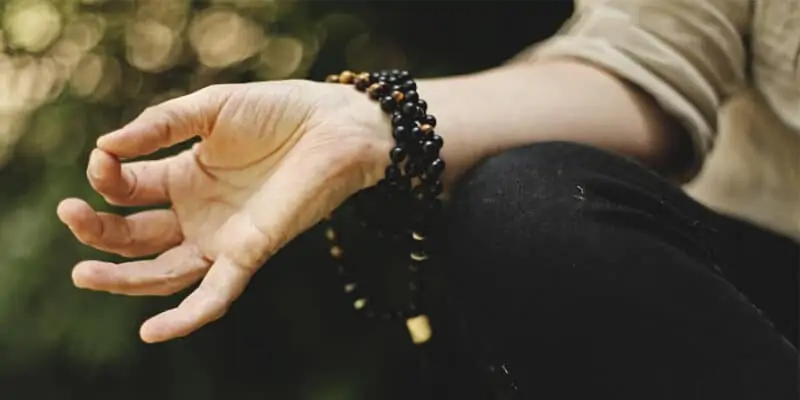
Within the yogic tradition, a mudra is a hand gesture used in meditation to call our attention inward and channel our energy in particular ways. They help to quiet the mind and deepen our practice. Mudras are used to channel prana for purposes of healing and further spiritual fulfillment. Mudras are also used during Pranayama (breath control exercises). Each mudra has a different purpose and intention.
In Ayurveda, each finger is associated with the five elements – fire, water, earth, air, and space (or ether). When you use the meditation symbols that are mudras, you activate the elements that are associated with the fingers that are engaged:
- Thumb: fire
- Index finger: air
- Middle finger: space
- Ring finger: earth
- Pinky finger: water.
Mudras are also used in Indian classical dance forms such as Bharatanatyam.
In short
There are many yoga symbols and Sanskrit symbols that can help us deepen our practice and help us be in touch with the highest state of consciousness. When we seek the guidance of a spiritual symbols properly and mindfully, we can enter a new dimension of being and live a more fulfilled spiritual life with our practice!




